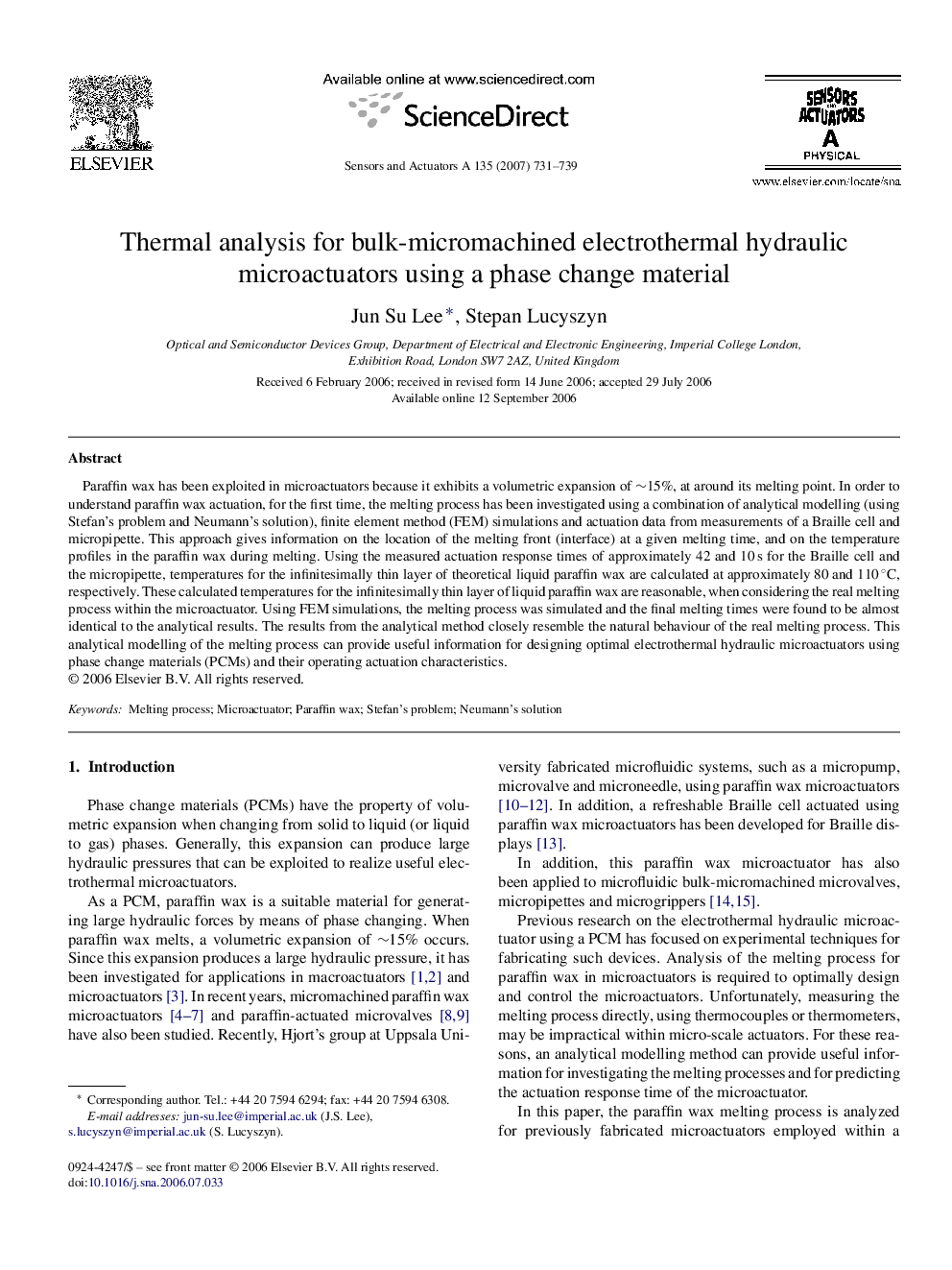| Article ID | Journal | Published Year | Pages | File Type |
|---|---|---|---|---|
| 10409114 | Sensors and Actuators A: Physical | 2007 | 9 Pages |
Abstract
Paraffin wax has been exploited in microactuators because it exhibits a volumetric expansion of â¼15%, at around its melting point. In order to understand paraffin wax actuation, for the first time, the melting process has been investigated using a combination of analytical modelling (using Stefan's problem and Neumann's solution), finite element method (FEM) simulations and actuation data from measurements of a Braille cell and micropipette. This approach gives information on the location of the melting front (interface) at a given melting time, and on the temperature profiles in the paraffin wax during melting. Using the measured actuation response times of approximately 42 and 10 s for the Braille cell and the micropipette, temperatures for the infinitesimally thin layer of theoretical liquid paraffin wax are calculated at approximately 80 and 110 °C, respectively. These calculated temperatures for the infinitesimally thin layer of liquid paraffin wax are reasonable, when considering the real melting process within the microactuator. Using FEM simulations, the melting process was simulated and the final melting times were found to be almost identical to the analytical results. The results from the analytical method closely resemble the natural behaviour of the real melting process. This analytical modelling of the melting process can provide useful information for designing optimal electrothermal hydraulic microactuators using phase change materials (PCMs) and their operating actuation characteristics.
Related Topics
Physical Sciences and Engineering
Chemistry
Electrochemistry
Authors
Jun Su Lee, Stepan Lucyszyn,
